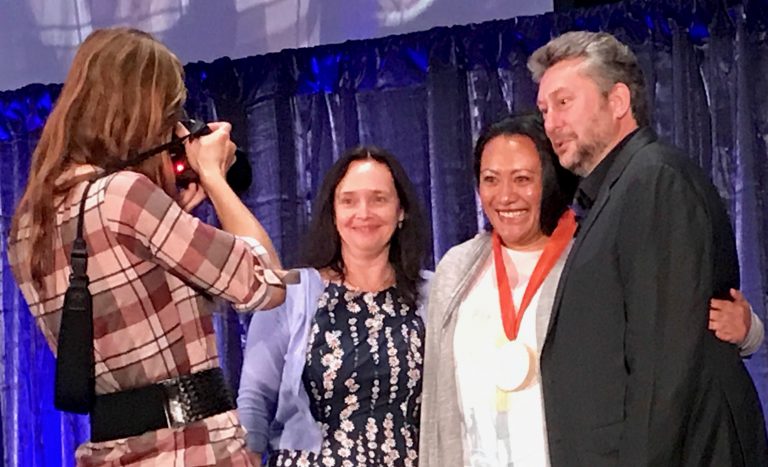Nine green building professionals and advocates were honored last week as Living Future Heroes for their role in helping to move the Living Building Challenge forward.
“We recognize these heroes not for simply doing less harm, but because they are working to create a built environment that is socially just, culturally rich and ecologically restorative,” International Living Future Institute CEO Amanda Sturgeon said in bestowing the annual awards at Living Future 17 in Seattle.
Carlo Battisti is a sustainability consultant who co-founded the Living Building Challenge Collaborative in Italy. He’s also co-creator a 64-hour design contest called REGENERATION for young European professionals, which is based on the Living Building Challenge.
Jason Forney and Jason Jewhurst, both partners at Bruner/Cott in Boston, designed the LBC-certified Kern Center at Hampshire College in Amherst, Mass. They’re also on the master plan team for the Regenerative Village at Yale Divinity School
Jason Gamache is a partner at McCool Carlson Green in Anchorage and a member of the ILFI Board of Directors. He’s also worked in Germany on Passive Haus and net-zero projects, and is helping to design Alaska’s first net positive energy buildings.
As chief sustainability officer for construction giant Skanska USA, architect Elizabeth Heider is one of the most influential professionals in green design and construction. She’s positioned Skanska as particularly engaged among large contractors in Living Building Challenge projects. (Among Skanska’s clients is the Living Building at Georgia Tech).
Scott Kelly, co-founder of Re:Vision Architecture in Philadelphia, was lead designer on the recently certified Cafritz Foundation Environmental Center in Accokeek, Maryland. He and his interdisciplinary team have worked as LBC consultant on six other projects.
Kirsti Luke, chief executive of the Ngāi Tūhoe Tribal Authority on the North Island of New Zealand. She spearheaded construction of the Te Kura Whare tribal center, the most recently fully certified Living Building. As a keynoter at the LF17, Luke spoke eloquently about the role the building has played in healing wounds of colonization.
Pete Muñoz is a licensed engineer, a certified wastewater treatment plant operator and the Pacific Northwest leader for Biohabitats Inc. He’s helped to design net-zero water systems for several Living Buildings. (Among Biohabitats’ clients is the Living Building at Georgia Tech).
Priya Premchandran is design and construction lead for Google Real Estate Workplace and Services. She serves as point person for integrating aspects of the Living Building Challenge into the search giant’s healthy, energy-efficient worksplace program. Premchandran championed and helped lead Google’s Petal Certified renovation of its seven-story, 237,000-square-foot Chicago offices.
More details on each Hero can be found on this ILFI blog post.
Feature image (above): Living Future Hero Kirsti Luke (center) with ILFI CEO Amanda Sturgeon and Living Building Challenge Founder Jason F. McLennan.


